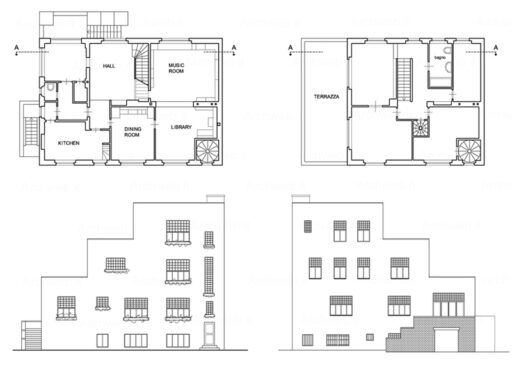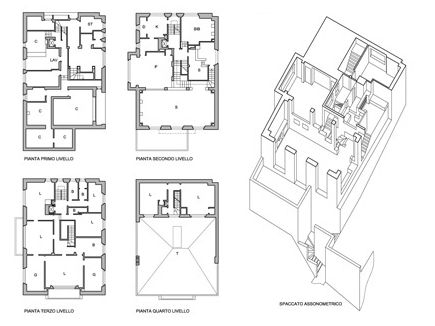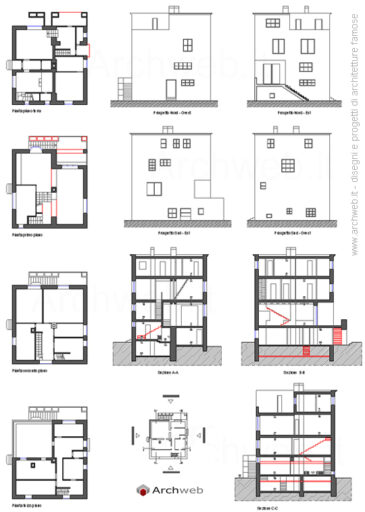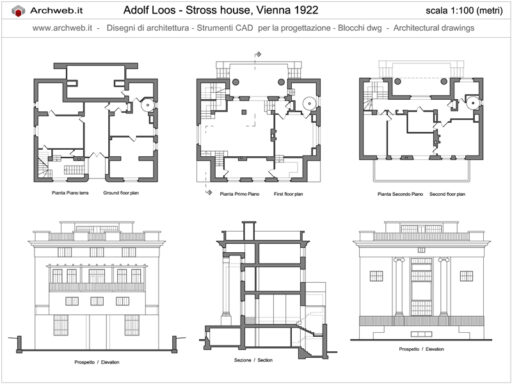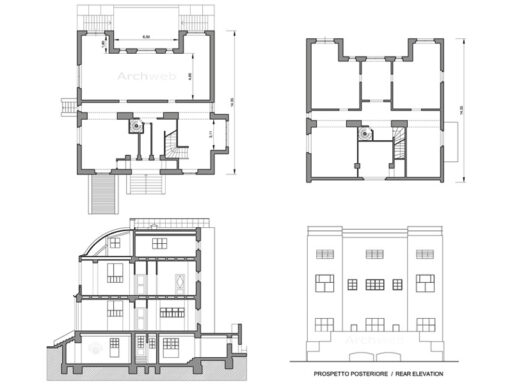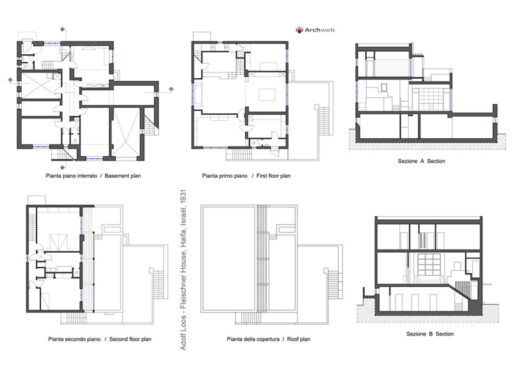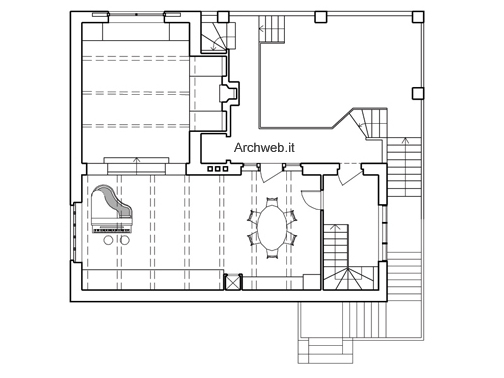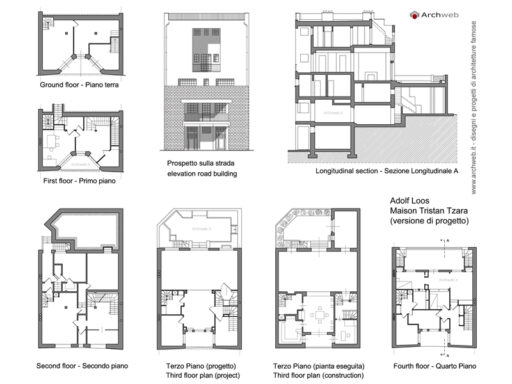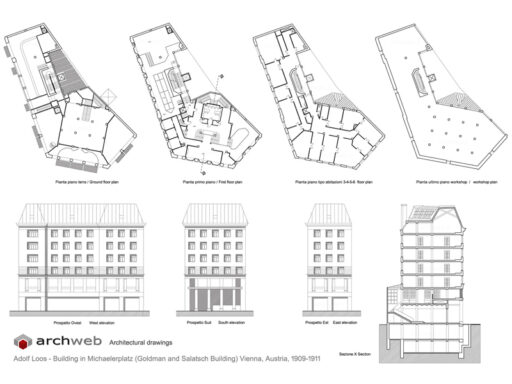The principle of the Coating
Words in the Void - Adolf Loos
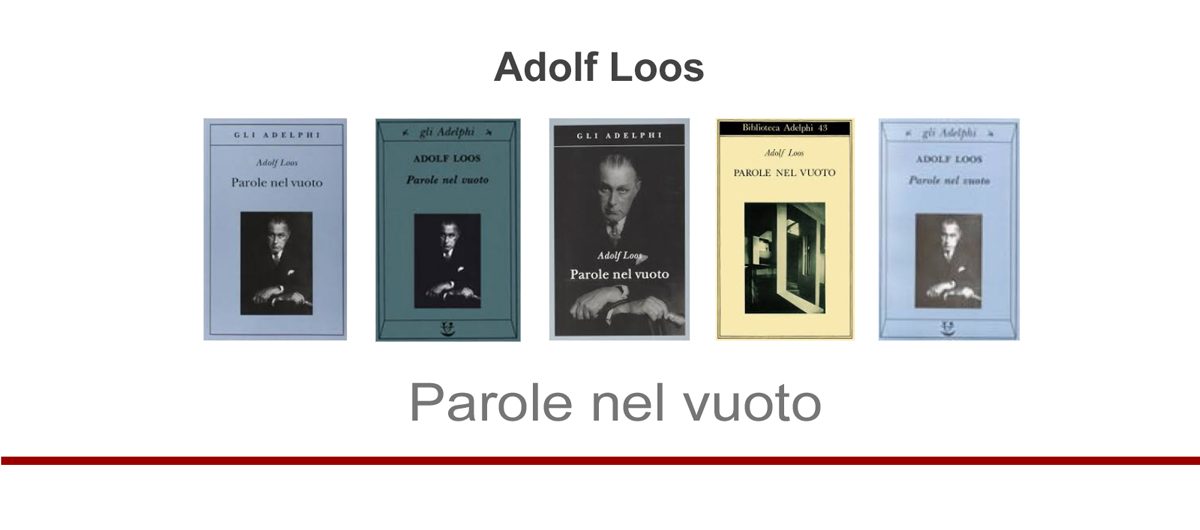
Adolf Loos
THE PRINCIPLE OF COVERING
from: Adolf Loos, Words in the void, Adelphi, Milan 1972
(page 79 to page 86)
Although all materials are equally precious for the artist, not all are equally suited to his goals. The static and constructive needs of a building often require the use of materials that do not accord with its purpose. The architect, let’s say, has the task of creating a warm, welcoming space. Warm and welcoming are the carpets. Consequently, he decides to spread a carpet on the floor and hang four of them on the walls. But you can’t build a house with carpets. Rugs, whether you keep them spread out on the floor or hung on the walls, require a structure that keeps them in the right position. Inventing this structure is the architect’s second task.
This is the right, logical path that must be followed in architecture. And so it is, according to this succession that man has learned to build. In the beginning was the coating. Man sought refuge from the elements, protection and warmth during sleep. He was trying to cover himself. The roof is the oldest architectural element. At first it consisted of leathers or products of textile art. This meaning of the word is still recognizable today in the Germanic languages. The roof had to be arranged in such a way as to provide sufficient shelter for the whole family! Walls were therefore added which at the same time offered shelter on the sides. It is in this way that architectural thought has developed both in humanity and in the individual.
There are architects who follow a different process. Their imagination does not create spaces, but masonry structures.
What remains are the interior spaces. For these spaces, the architect only selects the most suitable cladding at a later stage.
The artist, on the other hand, the architect, first thinks about the effect he intends to achieve, then with his mind’s eye he constructs the image of the space he will create. This effect is the sensation that the space produces on the spectator: which can be fear or fright, as in a prison; the fear of God, as in a church; reverential respect for authority, as in a government building; piety, as in a funeral monument; the sense of warmth, like in your own home; carefree, like in a tavern. This effect is achieved through the material and through the shape.
Each material has a formal language that belongs to it and no material can claim forms that correspond to another material. Because the shapes have developed starting from the possibility of application and the construction process of each individual material, they have developed with the material and through the material. No material allows an interference in one’s repertoire of forms. Whoever dares, nevertheless, such interference, is branded by the world as a forger. Art has nothing to do with falsification, with lies. Its ways are full of thorns, but pure.
It is always possible to rebuild the tower of Santo Stefano in concrete and fix it somewhere – however, it will never be a work of art. And what has been said for the tower of Santo Stefano also applies to the Pitti palace, and what is true for the Pitti palace also applies to the Farnese palace. And with this last building we would find ourselves in the middle of the architecture we see on our Ring. Sad times for art, sad times for the few artists among the architects of the time who were forced to prostitute their art to satisfy the common taste. Only a few were allowed to always meet clients with such an open mind as to grant the artist complete freedom of action. What fared best was Schmidt. Immediately after him came Hansen who, when he really went wrong, consoled himself by building buildings in terracotta. Poor Ferstel must have suffered the pains of hell, forced at the last moment to attach entire pieces of the facade made of concrete to his university. All the other architects of the time, with rare exceptions, certainly did not torment themselves with such sentimentality.
Things have changed? I would like you to exempt me from answering the question. Imitation and substitutes for art still dominate in architecture. Indeed, even more. In recent years, even defenders of this line have emerged – one actually remained anonymous as the matter did not seem clean enough to him – so that the architect-surrogate no longer needs to keep modestly aloof. Today it has even been possible to attach structural elements on the facade with ease and to hang the ‘load-bearing stones’ under the cornice, citing artistic reasons as justification. Well, come heralds of imitation, suppliers of very complicated inlays, scrambled foicloristic windows and papier-mâché vases! A new spring blooms for you in Vienna, the earth is freshly fertilized!
But perhaps the living room covered with carpets is not also an imitation? The walls are certainly not built with carpets! There is no doubt. But these rugs must only be rugs and not bricks, they must not be mistaken for such, they do not imitate their color or shape, instead they express their true meaning as a covering of masonry surfaces. They perform their task according to the coating principle.
As we have already said at the beginning, the cladding is older than the building. Its justifications can be of various kinds. It now serves as a protection against weather damage, such as oil paint on wood, iron or stone, now has a hygienic motivation, as in the case of glazed tiles covering the surface of the walls in toilets, now serves to achieve a certain effect, as when the statues are colored, the walls are papered, the wood is veneered. The coating principle, which Semper first enunciated, is also applicable to nature. The man is covered in leather, the tree in bark.
Starting from this principle of the coating, I formulate among other things a very precise law, which I will call the law of the coating. Don’t be scared. Laws generally mean the end of all progress. And it is true that the ancient masters got by very well even without laws. Sure. Where theft is unknown, it would be superfluous to create laws on it. When the materials used for cladding were not yet imitated, there was no need for any law. But now it seems the time has come.
The law therefore sounds like this: it is necessary to operate in such a way as to exclude any possible confusion between coated material and coating. That is to say: wood can be painted in all colors except one: the wood color. In a city where the commission in charge of the Exposition has made the decision to paint all the wood in the Rotonda as ‘fake mahogany’, in a city where the marezzo is the only decoration of the wood varnish, this law is very bold. It seems that there are people here who consider things of this kind very distinct. The only ones wooden artifacts that show off bold colors are the railway carriages, trams and carriages in general: but this is the case because they come from England. I dare to state here that I like a car of this type – particularly if it is on the power line – more with its bold colors than if it were painted as ‘fake mahogany’, according to the aesthetic principles of the Exhibition commission.
But even in our people the true sense of refinement slumbers, albeit sunken and buried. If this were not the case, the railway administration could not count on the fact that the brown color of the third class, painted in wood color, arouses a sense of less elegance than the green color of the second and first class.
I once demonstrated this unconscious feeling unambiguously to a colleague. On the first floor of a house there were two apartments. The tenant of one of the apartments had the external windows, which were previously brown, painted white at his expense. He made a bet and brought a certain number of people in front of the house, without pointing out the difference in the color of the windows, and we asked which of the two parts, according to them, Mr Pluntzengruber lived and in which Prince Liechtenstein, two tenants at the which we took the liberty of hypothetically renting the house. All respondents uniquely attributed the wood-colored part to Pluntzengruber. That colleague of mine has painted everything only white ever since.
Faux wood painting is naturally an invention of our century. The Middle Ages colored the wood mainly in bright red, the Renaissance in blue, the Baroque and Rococo in white on the inside and green on the outside. Our farmers still know how to reason enough to paint everything with bold colors. What an enchanting effect the green door and the gray fence produce in the countryside, the green shutters on the freshly plastered white wall. Unfortunately, in some places we have already been corrupted by the taste of our commission for the Exhibition.
We will still remember the indignation that spread in the field of imitation crafts when the first furniture painted with oil colors arrived in Vienna from England. The indignation of these warriors was not directed against the fact that they were painted. Even in Vienna, when softwood was used, it was colored with oil. But that English furniture dared to display their color so brazenly, instead of imitating hardwood, literally made these singular types of saints mad. They looked away and acted as if oil paint had never been used before. It is to be assumed that these gentlemen are convinced that their furniture and their woodwork with false grains have so far been taken for authentic hardwood works.
If I, who express these ideas, do not name any of the painters of the exhibition, I believe I can be sure of the gratitude of this association.
Applied to plasterers, the principle of the cladding would sound like this: with the stucco you can perform any ornament except one – the one that imitates the construction with exposed brick. It will seem useless to insist on such an obvious thing, but just recently I was pointed out to a building in which the plastered walls were painted red with the addition of white commissures. The much loved decoration of our kitchens, which imitates square stones, also falls into this group. In general, all the materials used for wall cladding, that is, upholstery, tarpaulins, fabrics or carpets, should not try to imitate brick or stone.
And now it will also be clear why the legs of our tights dancers produce such an unsightly effect. Knitted linen can be any color except flesh color.
When the material being covered is of the same color as the covering material, the latter can maintain its natural color. So, for example, I can cover the iron, which is already black, with a layer of tar, I can cover (veneer, inlay, etc.) the wood with another quality of wood, without having to color the wood covering; I can coat a metal with another metal by means of fire or electroplating. But the coating principle prohibits imitating the covered material in color. Therefore iron can very well be tarred, painted with oil colors or galvanized, but it can never be painted in bronze color, that is, in the color of another metal.
At this point, the concrete slabs with which some imitate the Venetian floors (mosaic), others the Persian carpets deserve a mention. There is undoubtedly a demand in this sense – manufacturers must also know their customers.
Yet no, you imitators, you architects of the surrogate, you are wrong! The soul of man is too high and sublime a thing for you to dupe it with your means and means. But our poor body is in your power. It has only five senses, which allow it to distinguish what is authentic from what is not. And where man cannot reach with his five senses, there begins the field of your competence, there is your kingdom. But behold – once again you are wrong! Try to paint on the wooden ceiling, above, well above, the most beautiful inlays – perhaps the poor eyes will accept them on trust. But the divine psyche will not believe your imposture. In the most beautiful inlays painted “as if they were real” she feels that it is only oil color.
(September 4, 1898)
THE BUILDING MATERIALS
from: Adolf Loos, Words in the void, Adelphi, Milan 1972
(page 73 to page 78)
What is worth more? A kilo of stone or a kilo of gold? It sounds like a ridiculous question. Only to the merchant, though. The artist will reply: for me all materials are equally precious. […]
The artist has only one ambition: to dominate the material so that his work is independent of the value of the material it is made of. Our architects, however, do not have this ambition. For them, a square meter of wall made of granite has more value than a plastered one. However, granite has no value in itself. […] Yet there are people who consider it the most valuable material. These people say material and mean work. Man’s workforce, profession and art […]
We live in an era that gives more importance to the quantity of work. Because this is easier to control, it immediately strikes everyone in its evidence and does not require an expert gaze or other particular knowledge. There is no mistaking that point. A certain number of workers have worked on a certain thing for a certain number of hours and for a certain remuneration. Anyone can do the calculation. And you want anyone to be able to easily realize the value of the things around them. Otherwise, what purpose would those things have? Therefore, those materials that require more time for processing are taken into greater consideration. […]
However, each processing time […] costs money. What if the money isn’t there? Then we start simulating the processing time, imitating the material. […]
Over the last few decades, the principle of imitation has completely dominated construction. […] Only in the face of concrete, which is an achievement of our century, have we been completely disarmed. Since concrete in itself is a wonderful material, we adhere to enhance it to a single principle, that principle that is re-proposed every time we start to apply a new material: what could be imitated with this? It was used as a substitute for stone. And, since concrete is extraordinarily cheap, it has been abused in every way, always in the typical parvenus style. […]
Each material has a formal language that belongs to it and no material can claim forms that correspond to another material. Because the shapes have developed starting from the possibility of application and the construction process of each individual material, they have developed with the material and through the material. No material allows an interference in one’s repertoire of forms. Whoever dares, nevertheless, such interference, is branded by the world as a forger. Art has nothing to do with falsification, with lies. Its ways are full of thorns, but pure.



























































